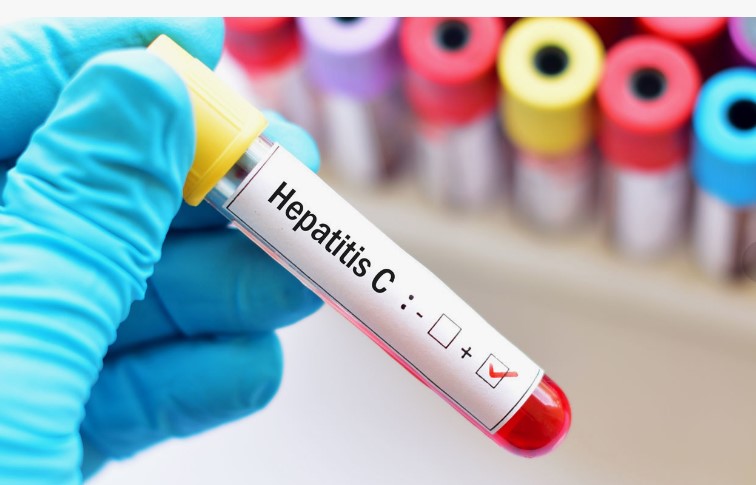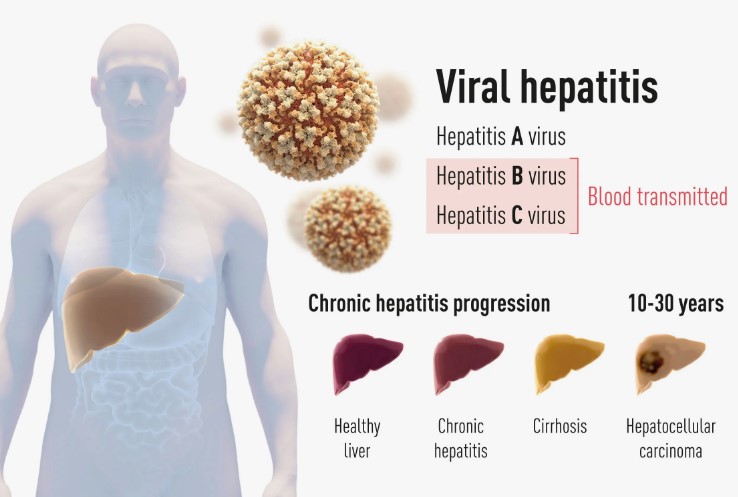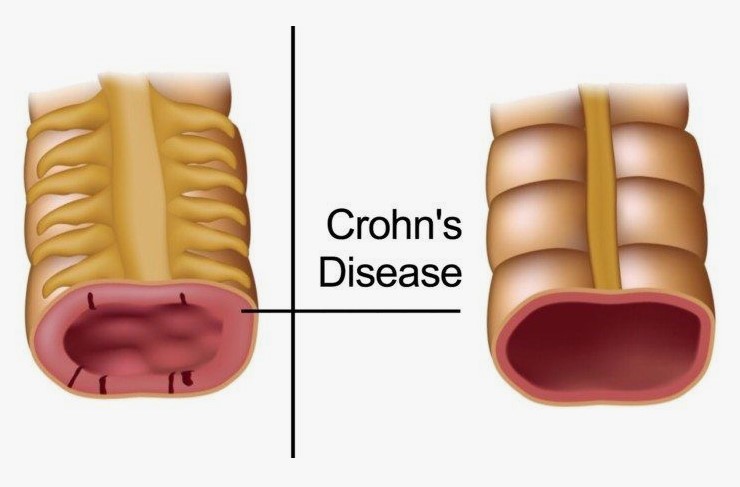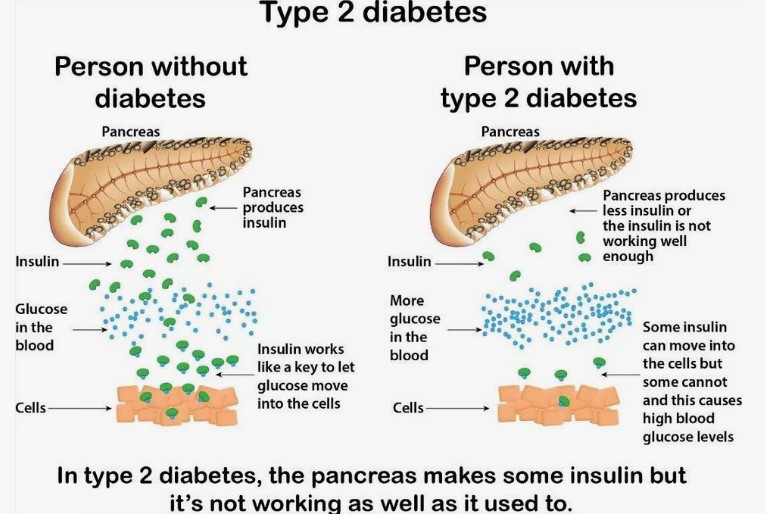Hepatitis B (HBV) and hepatitis C (HCV) are viral infections that primarily attack the liver, potentially leading to both acute (short-term) and chronic (long-term) illnesses. Often called “silent killers,” these infections can progress for years without noticeable symptoms, causing significant liver damage before detection. While they share the target organ, the viruses themselves differ, as do some aspects of their transmission, prevention, and treatment.
What are Hepatitis B & C ?
Both Hepatitis B and C are caused by distinct viruses that inflame the liver. This inflammation can impair the liver’s ability to function properly, affecting its crucial roles in filtering blood, producing essential proteins, and storing energy.
- Hepatitis B: Caused by the Hepatitis B virus (HBV), a DNA virus. A vaccine is available to prevent HBV infection.
- Hepatitis C: Caused by the Hepatitis C virus (HCV), an RNA virus. Currently, there is no vaccine to prevent HCV infection, but highly effective treatments are available that can cure most people.
How are Hepatitis B and C Transmitted?
Both viruses are transmitted through contact with infected blood or other body fluids, but the efficiency and common routes of transmission vary.

Hepatitis B Transmission: HBV is highly contagious and can be spread through:
- Sexual contact: Unprotected sex with an infected person. The virus can be present in blood, semen, and vaginal fluids.
- Sharing needles, syringes, and drug-injection equipment: HBV can survive on these items and is easily transmitted through direct blood-to-blood contact. This is a major route of transmission, especially among people who inject drugs.
- Mother to baby (perinatal transmission): Infected pregnant individuals can transmit HBV to their babies during childbirth. However, vaccination and immunoglobulin treatment at birth can effectively prevent this in most cases.
- Accidental needlesticks: Healthcare workers and others who come into contact with human blood are at risk.
- Sharing personal items: Less commonly, HBV can spread through sharing razors, toothbrushes, and other personal items that may come into contact with blood.
- Tattoos and body piercings: If performed with non-sterile equipment.
Hepatitis C Transmission: HCV is primarily a blood-borne virus and is most commonly spread through:
- Sharing needles, syringes, and drug-injection equipment: This is the most common route of HCV transmission in many parts of the world.
- Blood transfusions and organ transplants (before 1992): Before widespread screening of the blood supply began in 1992, this was a significant route of transmission. The risk is now very low in countries with effective screening programs.
- Birth (perinatal transmission): Infected pregnant individuals can transmit HCV to their babies, although the risk is lower than with HBV (around 6%).
- Healthcare-associated outbreaks occur due to poor infection control practices, such as the reuse of inadequately sterilized medical equipment.
- Sex with an infected person: While less common than with HBV, HCV can be transmitted sexually, particularly among men who have sex with men or in the presence of other sexually transmitted infections.
- Tattoos and body piercings: If performed in unregulated settings or with non-sterile instruments.
- Sharing personal items, such as razors, nail clippers, and toothbrushes, if they become contaminated with blood.

Important Note: Hepatitis B is more easily transmitted through casual contact involving body fluids than Hepatitis C. Hepatitis C is primarily transmitted through direct blood-to-blood contact. Neither virus is spread through breastfeeding, food, water, hugging, kissing, holding hands, coughing, or sneezing. Also Read>>>
Symptoms of Hepatitis B and C :
One of the most concerning aspects of both Hepatitis B and C is that many people, especially during the early (acute) phase and even with chronic infection, experience few or no symptoms. When symptoms do occur, they can be similar for both viruses and may include:
- Fatigue
- Fever
- Nausea and vomiting
- Abdominal pain
- Loss of appetite
- Dark urine
- Clay-colored stools
- Joint pain
- Jaundice (yellowing of the skin and eyes)
It’s crucial to understand that the absence of symptoms does not mean the virus is not causing liver damage or cannot be transmitted to others.
Acute vs. Chronic Hepatitis:
Both HBV and HCV can cause acute infections, which are short-term illnesses that occur soon after exposure.
- Acute Hepatitis B: Most adults with acute Hepatitis B will clear the virus from their bodies within a few months, developing lifelong immunity. However, infants and young children are more likely to develop chronic HBV infection.
- Acute Hepatitis C: Acute HCV is often asymptomatic and less likely to be diagnosed. Unlike HBV, most people who contract HCV will develop chronic infection.
Chronic HBV and HCV:
Chronic infection occurs when the virus remains in the body for more than six months.
- Chronic Hepatitis B: Can lead to serious liver damage over time, including cirrhosis (scarring of the liver), liver cancer, and liver failure. Some individuals with chronic HBV may remain asymptomatic for decades, while others experience ongoing mild symptoms. Even without symptoms, they can still transmit the virus.
- Chronic Hepatitis C: Similarly, chronic HCV can cause significant liver damage, cirrhosis, liver cancer, and liver failure over many years. Many people with chronic HCV have no symptoms until the liver damage is advanced.
Prevention:
Prevention strategies
- Hepatitis B Prevention:
- Vaccination: A safe and effective vaccine is available and is the primary way to prevent HBV infection. It is typically given in a series of three or four shots.
- Safe sex practices: Using condoms reduces the risk of sexual transmission.
- Avoiding sharing needles and drug-injection equipment.
- Safe handling of blood and body fluids.
- Avoid sharing personal items that may be contaminated with blood.
- Ensuring sterile procedures for tattoos and piercings.
- Hepatitis B immunoglobulin (HBIG): Can be given to newborns of infected mothers and to individuals exposed to HBV to provide short-term protection.
- Hepatitis C Prevention:
- Avoiding sharing needles and drug-injection equipment: This is the most critical prevention measure.
- Safe handling of blood and body fluids.
- Avoid sharing personal items that may be contaminated with blood.
- Ensuring sterile procedures for tattoos and piercings.
- Practicing safe sex: Using condoms can reduce the risk, although the risk of sexual transmission is generally lower than for HBV.
- Screening of blood and organ donations has significantly reduced transmission through these routes in developed countries.
Testing and Diagnosis:
Blood tests are the only way to diagnose Hepatitis B and C. These tests can detect the presence of the virus, antibodies produced in response to the virus, and assess liver function. Screening is particularly important for individuals at higher risk.
- The CDC recommends that all adults in the U.S. be screened for hepatitis B at least once in their lifetime. Certain groups, such as pregnant women and those with ongoing risk factors, should be tested more frequently.
- The CDC also recommends a one-time screening test for all adults aged 18 years and older. Screening is also recommended for individuals with specific risk factors.
Treatment:
Treatment options are available for both B and C:
- Hepatitis B Treatment: While there is currently no cure for chronic hepatitis B, antiviral medications can help control the virus, reduce liver damage, and prevent complications. Treatment is not needed for acute HBV in most adults, as the body clears the virus on its own. Regular monitoring by a liver specialist is crucial for individuals with chronic HBV.
- Hepatitis C Treatment: Direct-acting antiviral (DAA) medications have revolutionized HCV treatment. These oral medications are highly effective and can cure over 95% of peoplen within a few months. Early diagnosis and treatment are essential to prevent long-term liver damage.
Living with HBV and HCV:
Managing hepatitis B or C involves taking care of your liver health:
- Avoid alcohol and drugs: These can further damage the liver.
- Maintain a healthy lifestyle: Eat a balanced diet, exercise regularly, and get enough rest.
- Get vaccinated against Hepatitis A to prevent additional liver damage from another hepatitis virus.
- Follow your doctor’s recommendations: Attend regular check-ups and take prescribed medications as directed.
- Prevent transmission to others: Understand how the virus spreads and take necessary precautions.
- Consider informing sexual and household contacts so they can get tested and vaccinated against Hepatitis B if needed.
Conclusion:
Serious liver infections that can have significant long-term health consequences. Due to their often-silent nature, awareness, testing, and prevention are crucial. Vaccination is a powerful tool against Hepatitis B, while effective treatments can now cure most cases. By understanding the transmission routes, symptoms, and available interventions, individuals can take steps to protect themselves and others from these potentially life-threatening viruses. If you believe you may be at risk or have been exposed, it is essential to talk to your doctor and get tested. Early detection and appropriate management are key to preventing serious liver damage and improving long-term health outcomes.








